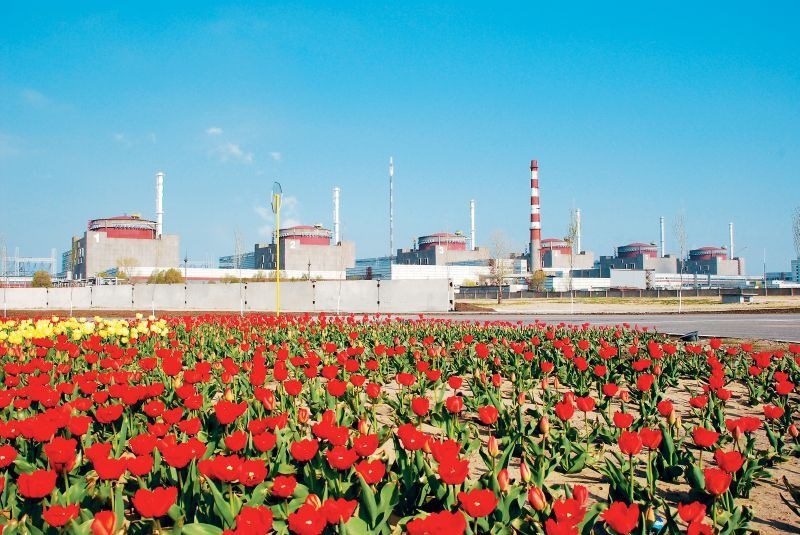War and Nuclear Power: Stakes Are High for People, Environment, and Industry
Credit to Author: Aaron Larson| Date: Thu, 01 Dec 2022 05:13:00 +0000

John Stevens Cabot Abbott, the 19th century American historian perhaps best known for writing History of Napoleon Bonaparte and History of the Civil War in America, is attributed with the quote, “War is the science of destruction.” In truth, however, I don’t think most combatants really think about science when going into battle; they have enough on their minds just trying to stay out of harm’s way. Nonetheless, there are many consequences, some that could require serious science to solve, that can result from the actions soldiers take during wartime.
The war in Ukraine has brought to light a few of the more significant risks associated with war in a modern world powered by nuclear energy. Ukraine is heavily dependent on nuclear power for its supply of electricity. The country is home to 15 reactors, which have provided more than half of Ukraine’s electricity in recent years. Among the nuclear power stations is the six-unit Zaporizhzhya facility, Europe’s largest nuclear power plant (NPP) with a total capacity of 6 GW (Figure 1). It is located in the “steppe zone” of Ukraine, a natural grassland plain in the southern part of the country.

Russian Troops Occupy Ukrainian Nuclear Site
Russian troops took control of the Zaporizhzhya NPP during the first week of March. International Atomic Energy Agency (IAEA) Director General Rafael Mario Grossi reported on March 4 that in the conflict leading up to the takeover, a projectile had hit a training/construction building within the plant site, causing a fire, which was extinguished by the local fire brigade at the power station. While none of the safety systems for the six reactors were affected and there was no release of radioactive material, the incident was significant in that it demonstrated the vulnerability both of the staff and the plant.
At the time, Grossi outlined “seven indispensable pillars for ensuring nuclear safety and security.” He noted the following:
- ■ The physical integrity of the facilities—whether it is the reactors, fuel ponds, or radioactive waste stores—must be maintained.
- ■ All safety and security systems and equipment must be fully functional at all times.
- ■ The operating staff must be able to fulfil their safety and security duties, and have the capacity to make decisions free of undue pressure.
- ■ There must be secure off-site power supply from the grid for all nuclear sites.
- ■ There must be uninterrupted logistical supply chains, and transportation to and from the sites.
- ■ There must be effective on-site and off-site radiation monitoring systems, and emergency preparedness and response measures.
- ■ There must be reliable communications with the regulator and others.
It’s obviously easy for everyone to agree to maintain these pillars during peacetime, but during a war, the lines can be blurred. It’s understandable why the Russians, for example, might want to take the plant down, putting a crimp on the Ukrainian power grid. With some thought, and perhaps a little science, they could do so without jeopardizing the plant or the environment. But as I said in the beginning, soldiers don’t always think about things like that. Furthermore, many of the troops on the ground may not have a complete understanding of how a nuclear reactor works or what it needs to remain safe, which presents significant risk to everyone involved.
Continued Occupation
Since the Russians first took control of the Zaporizhzhya site, there have been several incidents that breached the pillars outlined by Grossi. Among the areas of concern identified by the director general in later briefings were the presence of representatives of the Russian Federation’s state atomic energy corporation Rosatom and the interference those senior technical staff members could have on the normal lines of operational command or authority. He suggested this could lead to potential friction in terms of decision-making. Energoatom, for its part, suggested there was a significant negative effect on morale and the emotional state of plant workers after the Russian military forces seized the site. Meanwhile, communication between the site and Ukraine’s regulator presented another broken pillar, as it was reported that many lines of communication were either not functioning or unreliable.
Yet, perhaps the most serious infringement on the IAEA pillars during the Russian occupation has been the multiple times off-site power has been lost at the plant. The site is equipped with 20 emergency diesel generators that can provide the required power for safe operation of the reactors and the ability to bring them to cold shutdown should off-site power be lost, but the loss of off-site power violates defense-in-depth principles and adds significant risk to plant operations.
Russia, of all countries, should have a firm understanding of the importance of safety in the nuclear power industry. It has 37 reactors in operation with a total net capacity of about 27.7 GW and three more units under construction. Russia also has significant interest in exporting its nuclear goods and services around the world.
Today, Rosatom claims to be in “first place in terms of the number of simultaneously implemented nuclear reactor construction projects” with its three units in Russia and 34 abroad at various stages of implementation. In 2021, Rosatom’s package of foreign orders exceeded $139.9 billion, according to the company. It doesn’t take a scientist to conclude that NPP projects would be seriously stalled by a nuclear incident in Ukraine. While I don’t really care if Russia ever sells another reactor abroad, it’s still in everyone’s best interest to maintain plant safety at Zaporizhzhya and prevent a nuclear catastrophe.
—Aaron Larson is POWER’s executive editor.
The post War and Nuclear Power: Stakes Are High for People, Environment, and Industry appeared first on POWER Magazine.